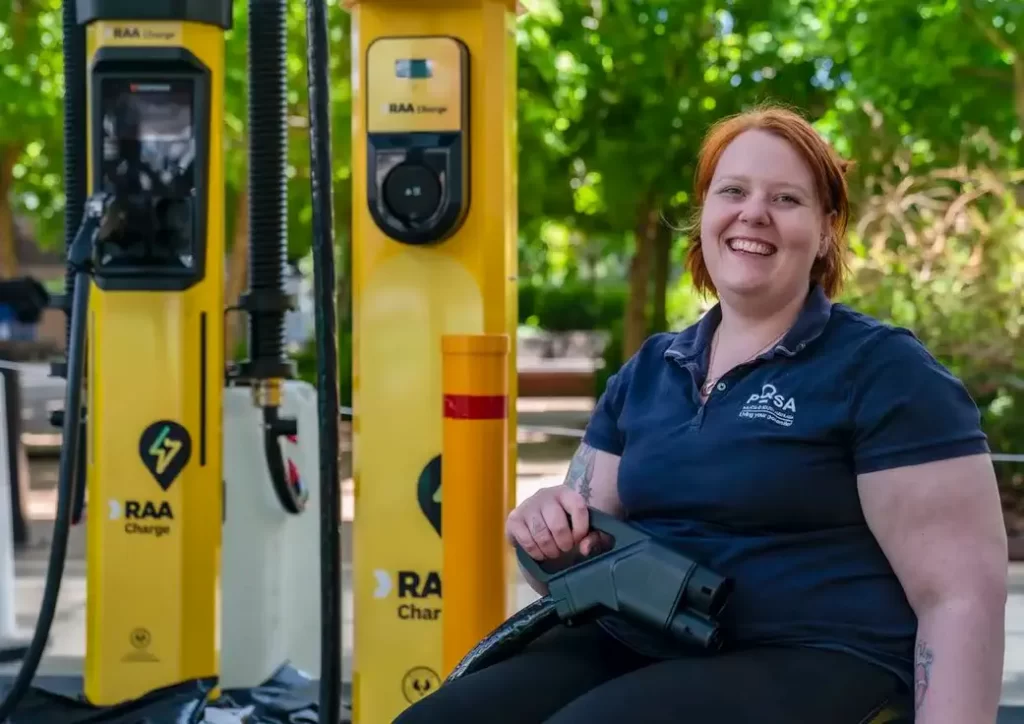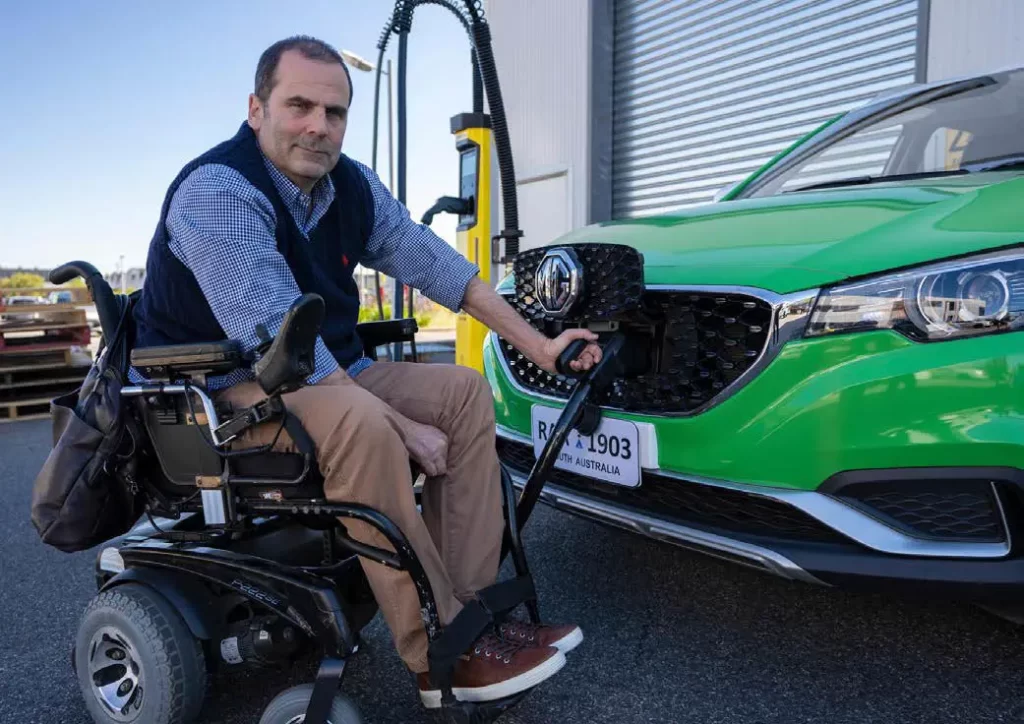Find out why RAA Charge is the best “Core” State EV charging network… techAU’s Neerav Bhatt had a chat with Andrew Howard, RAA’s EV Charging Program Director to learn all the details about their rapidly growing South Australian RAA Charge network of public electric car chargers across rural and urban areas of the state.
Neerav will soon be driving across South Australia trying out the new RAA network during an extended EV road trip holiday, most likely in a media loan Hyundai Ioniq 5 Epiq AWD.
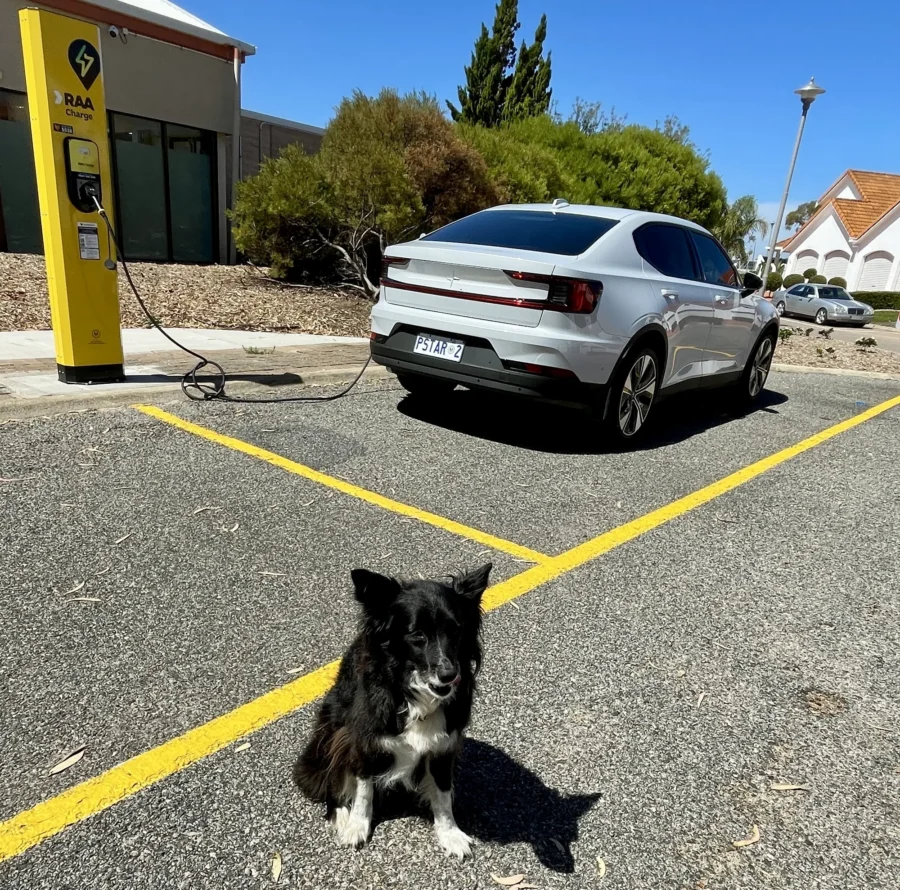
I asked Andrew is RAA Charge a staged network like in Queensland where they have Queensland Electric Super Highway Stage 1, Stage 2 etc?
He replied:
“As far as the state government Department of Energy & Mining contribution to EV charging is concerned, this is a one off big bang approach. This is it for now and it’ll pause as usage increases”.
How close to each border will the RAA Charge network get?
Andrew said:
“We’ve got five borders, QA, NT, QLD, NSW and VIC and are pushing as far as we possibly can out to the border of the SA Power Network grid”.
“There simply isn’t enough power beyond that to install high power DC chargers so we’re pushing out AC chargers as close to the borders as we can possibly go”.
“the NRMA have got some federal funding to do their national EV charging regional rollout. They’ve got some like a skid mounted design where they can take a very low amperage input charge WITH A battery and use that to provide DC CHARGING.”
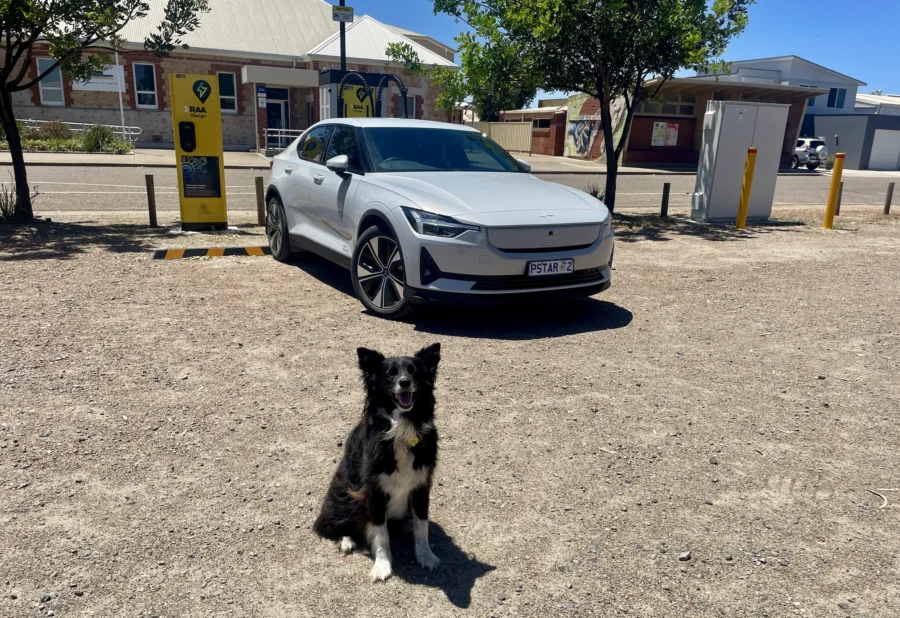

Why RAA Charge is the best “Core” state EV network
With 140 locations and over 500 plugs on the RAA Charge alone, plus other chargers run by Tesla, NRMA, JOLT, Evie etc, the parts of South Australia South of Coober Pedy and East of Ceduna will probably be well served with Fast DC EV chargers for a while.
The idea of this government grant to the RAA appears to be build out a well spaced network especially in less commercially viable locations and hopefully catalyse private investment and federal funds for NRMA, Evie, Tesla etc to fill in the gaps later.
In my opinion it’s true that South Australian electric car drivers are getting access to an open access motoring association run EV fast DC charging network a few years later than the Eastern states.
However the delay means that the South Australian RAA Charge network is better equipped, designed and planned from the start than NRMA, QESH etc which started earlier:
- RAA DC fast chargers are on average much faster with minimum 150kW (no 50kW)
- Some RAA DC charging locations have 7kW AC chargers next to them as a backup to the DC units, for people who aren’t in a rush or for people who are next in line for a DC charge and want to top up slowly in the meanwhile.
- There are 7kW AC chargers installed at strategic points such as rural/regional accommodation sites so travellers can recharge overnight or while enjoying a pub/local cafe meal
- No Tritium chargers in the RAA network
- RAA pricing is fairer with time of use charging more expensive during peak times and cheaper off peak. Currently about 2/3rds of usage is off peak and 1/3rd is peak.
- RAA are considering implementing idle fees when an EV remains connected to one of their charging stations well after reaching full charge
As you can see in the infographics below, at the moment South Australia is by far the biggest contributor at the moment to growth to the Chargefox network.
Once completed in mid to late 2024 the RAA Charge network will comprise over 530 chargers across 140 electric vehicle charging stations in over 50 rural, regional and metropolitan service locations.
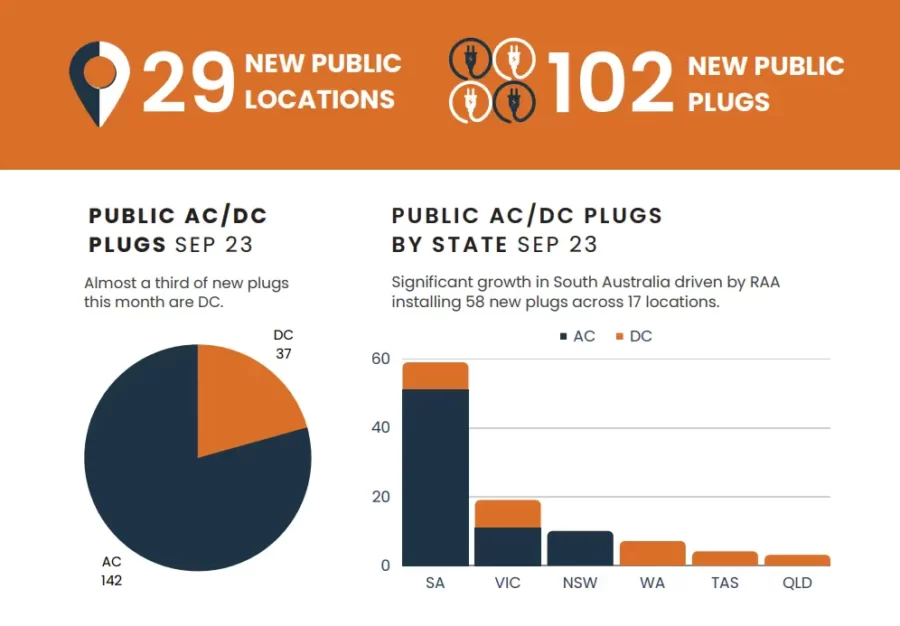

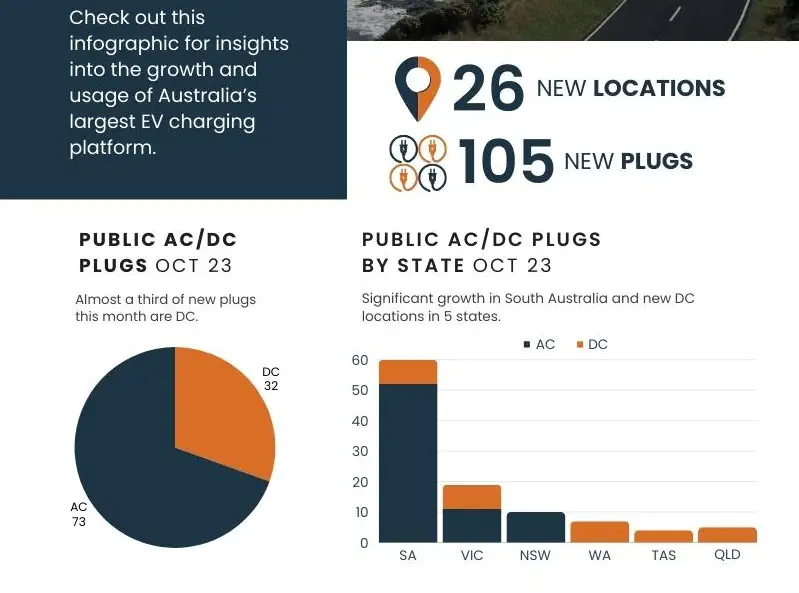



Andrew explained that all RAA Charge sites (slow AC and fast DC) allow starting a charge via the Chargefox app or an RFID card tap.
This is great for 3 reasons:
- RAA lets you start a charge at all their sites via an RFID tap. This is great for EV drivers who are not familiar with smartphones or are borrowing an EV from work, a family member, hire company etc.
- RAA isn’t app only. App only charging networks like Ampol AmpCharge are not user friendly as apps may not work for various reasons eg: low mobile signal, logged out due to infrequent app use, app problems being installed on old phones etc.
- RAA uses the Chargefox network which the majority of EV drivers already have the app or RFID card for. RAA doesn’t force you install yet another new charging app.
Andrew also told me that RAA looked to USA and Europe for best practice charging site design.
Since there are currently no regulations or design standards within Australia to guide the design and installation of EV charging infrastructure RAA conducted their own accessibility trials to assist in the design and construction of their charging bays, and have generously published findings in the form of design guidelines to help other charging networks.
Jetcharge AC Chargers & Kempower DC Chargers
The 7kW AC units RAA has installed are all Jetcharge Chargemate, with almost all being socket only so you have to BYO your own Type 2 charging cable.
This reduces maintenance and install costs, as charging cables are expensive and fixed ones often get dropped on the ground by people which damages them.
The reason RAA chose 7kW is because they typically found that the electrical infrastructure at motels and caravan parks is “antique” so the cost to upgrade the power into the site or the power switchboard would be high. RAA found that 7kW per phase was usually doable without needing these modifications.
Say I’m going on a road trip. I always try to choose a motel or hotel or a B&B that lets me charge there overnight or in the evening, which saves time and or money. Turn up with 50% battery, wake up at 100% and off we go.
RAA Charge Fast DC charging sites are exclusively Kempower units skinned bright yellow in RAA colours.
- Rapid 150kW – 2 bays, both CCS 2
- Ultra Rapid 200kW – 4 bays, 3 CCS 2 and 1 CHAdeMO.
All Kempower units provide power dynamically.
As the video below shows, instead of each Kempower cable offering a fixed maximum charge rate of eg: 50kW/car regardless of the EV’s maximum charge rate, the charging rate changes to match an EV’s DC charging capability (eg: Hyundai Ioniq 5 really fast and BYD Dolphin slow) as well as the rate at which an EV can charge at the time depending on how far along the charging curve it has progressed.
RAA expected CHAdeMO to be underutilised and it has been so far. RAA has got the option to swap out CHAdeMO plugs for another CCS2 in the future if usage of CHAdeMO plugs declines a lot over time.
Pictured below is RAA Chargefox Barossa Central Shopping Centre which has a single 150kW dual CCS 2 Kempower unit.
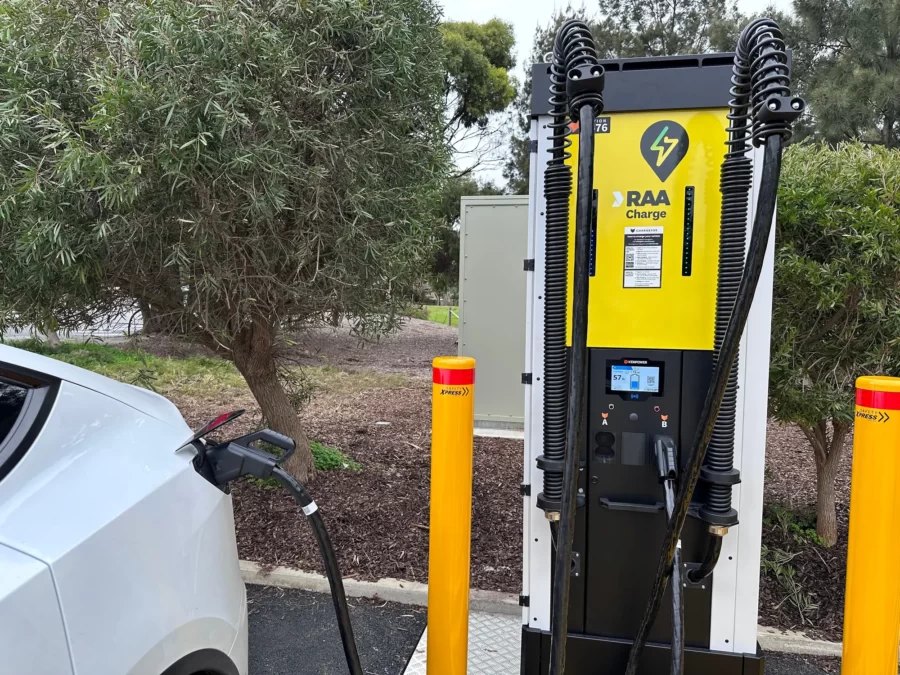

Maintenance and Reliability
Andrew says so far all the charging hardware is performing as expected.
According to Kempower all their charging solutions have been tested in extreme temperatures ranging from -30°C to +50°C.
Like solar inverters Kempower units are designed to de-rate at high temperatures, Charging current decreases 1.5% for every 1 degree Celsius rise in temperature above +40 degree Celsius.
Furthermore, Kempower say their charging design takes into account the logistical considerations of a hot country.
One of the unique features of Kempower chargers is that the Power Unit and Satellite are separate, meaning that charge point operators can install the Power Unit, where all the heavy electronics are housed, up to 80m from the Satellite.
As a result, Power Units can be installed out of direct exposure to the elements, either inside a well-ventilated building or in the shade. This limits the impact of the harsh Australian climate.
Filters still need to be changed and check-ups done with a proactive maintenance program utilising a combination of in house and external techs.

